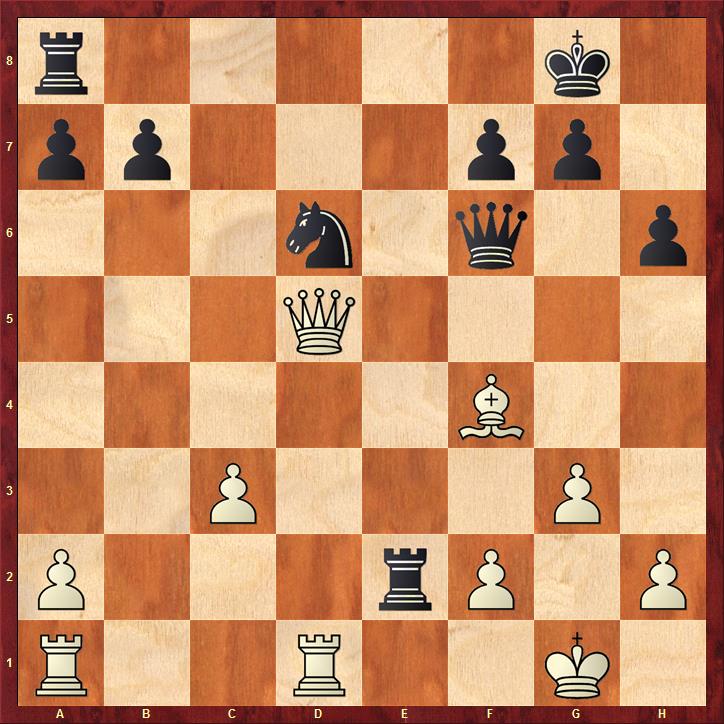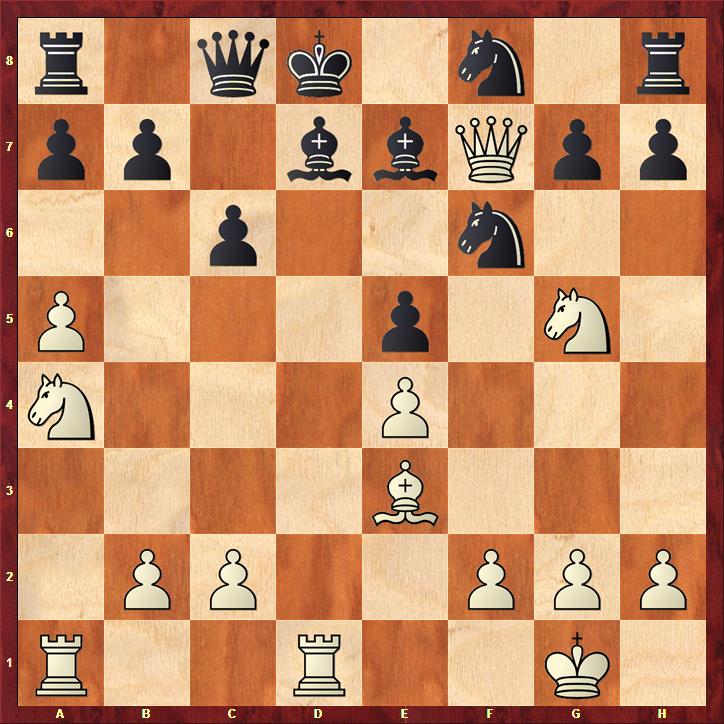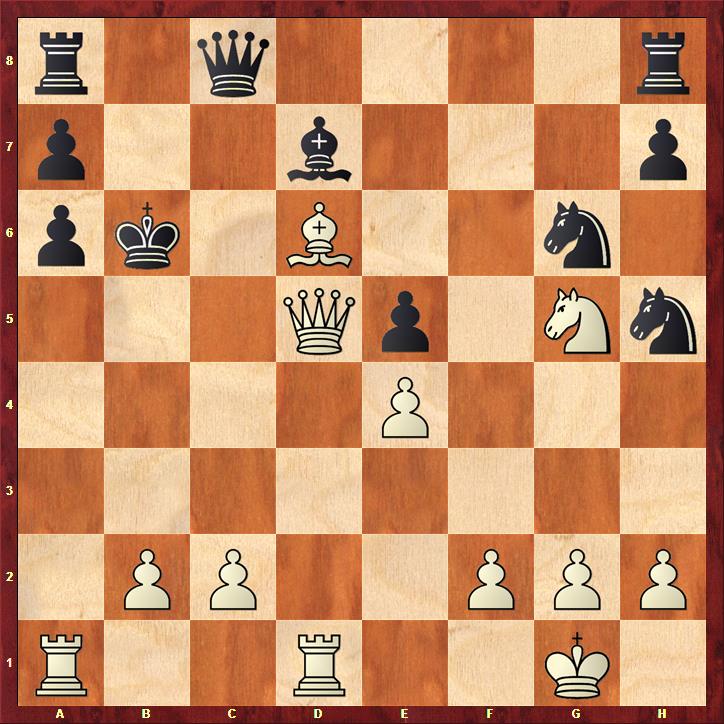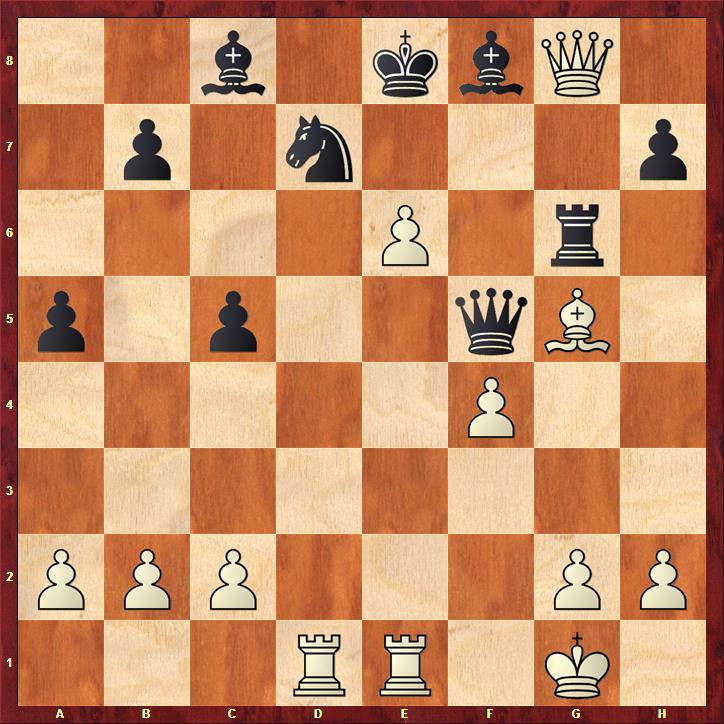Saved from collapse by the rich Russian sponsors, the FIDE Grand Prix moved to China this month for its fifth leg. Some of the world class chess players came to Beijing tired from the previous hectic schedule. They took part in some of the six major tournaments in the last four months: the Candidates tournament, Alekhine and Tal Memorials, Norway Classic and Grand Prix events in Zug and Thessaloniki.
The victory in Beijing went to Shakhriyar Mamedyarov, 28, who seems to be on a winning streak. Last month, the Azerbaijani grandmaster won the World Rapid Championship in Russia and the Geneva Masters.
Mamadyarov with the winning trophy
The tournament began with Sergei Karjakin's breakaway, three wins in the first three rounds, but he was pulled back after he lost three games in a row. At that moment Mamedyarov's move to first place with a burst of 3.5/4 was closely followed by Alexander Grischuk, 29. The two leaders looked tired at the finish, just preserving their places, each managing only one draw in the last two rounds.

The idea of the FIDE Grand Prix was adopted from the Grandmaster Association's World Cup, a series of six Grand Prix tournaments, played in 1988-89 with the participation of all the strongest players at that time, including Garry Kasparov and Anatoly Karpov.
FIDE is also using a similar complicated point system for the overall results. Each player participates in four of six tournaments and the worst result is discarded. Two players from the FIDE Grand Prix will advance to the next Candidates tournament. Topalov leads the series, Mamedyarov is second. But Alexander Grischuk and Fabiano Caruana can mount a challenge in the last tournament in Paris in September.
The game between the two Grand Prix leaders was important for the final classification in Beijing.
Mamedyarov - Topalov
FIDE GP Beijing 2013

Topalov could have played 20...Nf5 with a good game. His choice is not surprising since he is known for his aggressive play. But Mamedyarov took advantage of it.
20...Ne4? 21.Qd3! Nxc3 22.Rac1! Nxd1?
Black loses by force. Topalov had to play 22...g5 23.Rxc3 gxf4 24.Qxe2 Qxc3 25.Qg4+ Qg7 26.Qxf4, although white keeps the edge.
23.Qxe2 Nc3 24.Qc4

The knight is caught. The white queen controls six escape squares, the rook the last two.
Black resigned.
On the wrong side of chess brilliancy
It seems strange that two grandmasters rated among the world's Top Ten can lose three consecutive games. It was not Karjakin's misfortune, but Hikaru Nakamura's losing hattrick in the last rounds of the Tal Memorial that reminded me of a story played out nearly a half century ago during the tournament in Belgrade in October 1965.
I came to the Yugoslav capital with a victory in Varna, Bulgaria, and one grandmaster norm. I needed another one. The GM norms depended in those days on the composition of the tournament. The more grandmasters, the lower the norm. FIDE didn't say how strong the grandmasters should be and many titled veterans were popular invitees. Perhaps it didn't matter too much: there were only some 60 grandmasters in the world and the title meant something.
The Belgrade tournament was different with a bunch of players in their twenties. Like Nakamura, I was leading the event by a half point with three rounds to go. A single point would guarantee me the first place and the final grandmaster norm. But I lost two games and drew in the last round, finishing a half point behind the winners, grandmasters Florin Gheorghiu and Milan Matulovic. Everything ended well: I made my final GM norm in December in Leipzig.
I began the downward spiral with the game against Dragoljub Velimirovic who had a reputation of a reckless attacker. I allowed him a bishop sacrifice in the Philidor defense for what I thought was only a slight discomfort of my king. I was looking for some devastating punches from his side, but he slowly and quietly developed his pieces. Suddenly, I was without a good move. I realized I was at the wrong end of a chess brilliancy. It was the best game of the tournament.
Velimirovic - Kavalek
Belgrade 1965
1.e4 d6 2.d4 Nf6 3.Nc3 e5 4.Nf3 Nbd7 5.Bc4 Be7 6.0-0 c6 7.a4 Qc7
The Dutch psychology professor and International Master Johan Barendregt was the main defender of this Philidor system. Black postpones castling or can start attacking on the kingside with h7-h6 and g7-g5. Still, 7...0-0 is preferable.
8.Qe2 Nb6?!
Asking for trouble, but I could not foresee what was Velimirovic about to do. That's why he was called the Yugoslav Tal.
9.dxe5 dxe5 10.Bxf7+!

The storm starts with a thunder. Immediately after the game, we were not sure about the correctness of the sacrifice. Even today's computers show the game being roughly equal.
10...Kxf7
At the first glance it is not clear how white plans to attack. Remarkably, with the black king in the middle, Velimirovic calmly develops his pieces.
11.a5
Chasing the knight back, white gains the important square c4 for his queen.
11...Nbd7 12.Qc4+ Ke8
Black can't allow a king hunt after 12...Kg6 13.Nh4+ Kh5 14.Qf7+ Kxh4 (14...g6 15.Nf5) 15.g3+ Kh3 16.Qe6+ Ng4 17.Ne2 Ndf6 18.Kh1 Bxe6 19.Ng1 mate.
13.Ng5 Nf8
White gets the other rook after 13...Rf8 14.Ne6 Qd6 (After 14...Qb8 15.Nxg7+ Kd8 16.Rd1 black is playing without his queenside pieces.) 15.Nxg7+ Kd8 16.Rd1 Qb4 17.Ne6+ Ke8 18.Nc7+ Kd8 19.Qxb4 Bxb4 20.Nxa8 winning.
14.Rd1 Bd7
I missed a better defense 14...Bd6 15.Be3 h6 16.Rxd6 hxg5 (16...Qxd6? 17.Qf7+ Kd8 18.Rd1+-) 17.Rad1 (17.Nb5 Qe7 18.Rxc6 Be6) 17...Be6 18.Rxe6+ Nxe6 19.Qxe6+ Qe7 20.Qxe7+ Kxe7 21.Bxg5 with two pawns for the exchange white should not worry too much, but neither should black.
Another way to prevent mate on f7 is 14...Bd8 but white keeps the advantage with a rook sacrifice 15.Rxd8+! a) 15.Be3?! Bg4!=; b) 15.Bf4!? Qe7!= (15...exf4 16.Nb5 cxb5 17.Rxd8+ Kxd8 18.Nf7+ Qxf7 19.Qxf7 N6d7=) ; 15...Kxd8 16.Be3 Ke8 17.Rd1 Be6 (17...h6 18.Nb5!+-) 18.Nxe6 Nxe6 19.Qxe6+ Qe7 20.Qc4 with white's edge.
15.Be3
Velimirovic quietly brings another piece into attack and I couldn't find a sensible defense. It was possible to strike immediately with 15.Nb5 Qb8 16.Qf7+ Kd8 17.Nd6 Bxd6 18.Qxg7 Be7 19.Nf7+ Kc7 20.Nxe5 Qe8 21.Qxh8+- (Houdini 3).
15...Qc8?
An unfortunate retreat, but other moves are only slightly better:
A. 15...h6 16.Nb5 Qb8 17.Qf7+ Kd8 18.Qxg7 (18.Nxa7 c5!) 18...hxg5 19.Qxh8 cxb5 20.Bxg5+- (Houdini 3);
B. 15...Kd8 16.Nf7+ Kc8 17.Rxd7! (17.Nxh8 Be6) 17...Qxd7 18.a6 b6 19.Rd1 Qe6 20.Nd5 Bc5 21.Nxf6 gxf6 (21...Qxc4 22.Rd8+ Kc7 23.Ne8#) 22.Bxc5 bxc5 (22...Qxc4 23.Rd8+ Kc7 24.Bd6#) 23.Qa4 and white's attack is too powerful.
16.Qf7+ Kd8 17.Na4!

An elegant finishing touch. White has many threats: 18.Nb6 or sticking a light piece on the square c5. There is not much black can do.
17...c5
[17...h6 18.Nb6!+-]
18.Nxc5! Bxc5 19.Qxg7 Ng6 20.Bxc5
20.Qxf6+! appears to be stronger, for example: 20...Be7 21.Ne6+ Ke8 22.Ng7+ Kd8 23.Bb6+ axb6 24.Qxb6+ Qc7 25.Rxd7+ Kxd7 26.Qe6+ Kd8 27.Rd1++- (Houdini 3)
20...Nh5
[20...Qxc5 21.Ne6++-]
21.Be7+ Kc7
Black gets mated after: 21...Nxe7 22.Nf7+ Ke8 (22...Kc7 23.Qxe5+ Kc6 24.Rd6+ Kc7 25.Re6#) 23.Nd6+ Kd8 24.Qxh8+ Kc7 25.Nb5+ Kc6 (25...Bxb5 26.Qxe5+ Kc6 27.Qd6#) 26.Qxe5 b6 27.Nd4+ Kb7 28.a6 mate.
22.Bd6+ Kc6
[22...Kd8 23.Qh6+-]
23.Qf7 Kb5
[23...Qg8 24.Qf3+-]
24.a6 bxa6 25.Qd5+
White simply mates after 25.Qb3+ Kc6 26.Rxa6+! Qxa6 27.Qd5+ Kb6 28.Qc5+ Kb7 29.Qc7 mate.
25...Kb6

26.c4
Velimirovic prefers quiet moves. But he had a forced mate: 26.Rxa6+! Kxa6 27.Ra1+ Kb6 28.Qa5+ Kc6 29.Qc5+ Kb7 30.Qb4+ Kc6 31.Ra6+! Qxa6 32.Qc5+ Kb7 33.Qc7 mate.
26...Qc6 27.Qa5+ Kb7 28.Bc5 Rac8 29.b4 Rhd8
After 29...Ka8 30.Rd6 Qb7 31.Rxa6 wins.
30.Nf7
30.Rd6 ends it faster: 30...Qc7 31.Qxa6+ Ka8 32.Bxa7 mating soon.
30...Rg8 31.Rd6 Ngf4 32.Rxc6 Rxg2+ 33.Kf1 Rxc6 34.Nd8+ Kc8 35.Nxc6 Bxc6 36.Bd6 Black resigned.
The game brings us back to Beijing where the young Dutch grandmaster Anish Giri, 19, suffered a similar fate. In the same Philidor defense, the Chinese grandmaster Wang Hao, 23, sacrificed his bishop the same way as Velimirovic. After Giri panicked, Wang kept increasing his attack until it attained destructive force.
Wang Hao- Giri
FIDE GP Beijing 2013
1.d4 d6 2.e4 Nf6 3.Nc3 e5 4.Nf3 Nbd7 5.Bc4 exd4 6.Qxd4 Be7 7.Bxf7+!?

A sacrifice that can jolt you. It may not be completely correct, but
Wang Hao was not doing particularly well in the tournament and decided to have some fun.
7...Kxf7 8.Ng5+ Ke8
Other retreats are disastrous:
A. 8...Kg6 9.f4+-;
B. 8...Kg8 9.Qc4+ d5 10.Nxd5+-
9.Ne6 c5
The only move, opening escape road for the black queen.
10.Qd1 Qb6 11.Nxg7+ Kf7 12.Nf5 Bf8
After 12...Ne5 13.Nxe7 Kxe7 14.Bg5 Be6 15.f4 Nf7 16.Bxf6+ Kxf6 17.0-0 the black king is not secured.
13.0-0 d5?!
A nervous reaction. Black didn't have to give up the d-pawn. Giri should have tried 13...Rg8 14.Nd5 Qc6 with roughly equal chances.
14.Nxd5
14.exd5 was also playable.
14...Nxd5 15.Qxd5+ Ke8?
Allowing white to develop the rest of his pieces quickly. 15...Qe6 was logical, for example 16.Qd3 (16.Nh6+ Bxh6 17.Qxe6+ Kxe6 18.Bxh6 Nf6=) 16...Nf6 17.Re1 white has three pawns for a piece, but black is in the game.
16.Bg5 Qg6
Computers' suggestion 16...Qc6 is also inadequate. White keeps the queens on the board 17.Qd2 with advantage.
17.Rad1 Rg8
[17...Qxg5 18.Nd6+ Bxd6 19.Qxg5+-]
18.f4 a5
White should win after 18...h6 19.e5! Qxf5 (19...hxg5 20.e6 Rg7 21.Nxg7+ Qxg7 22.fxg5+-) 20.Qxg8 Qf7 21.Qxf7+ Kxf7 22.Bh4+-.
19.e5 Qxf5 20.Qxg8 Ra6 21.Rfe1 Rg6
After 21...Re6 22.Rd6 Rg6 23.e6! white wins.
22.e6!

After 22...Rxg8 23.exd7+ Kf7 24.d8Q wins.
Black resigned.
Indispensable Chess Results
I saw the 1965 crosstables from Varna, Belgrade and Leipzig in the latest volume of Gino Di Felice's Chess Results, published by McFarland. The Italian author arranged together 11 volumes of tournament crosstables and match scores from 1747 till 1967. The last tome covers the years 1964-1967, a period of my first international tournaments, and I was able to relive some exciting moments. Sometimes Di Felice begins a crosstable on one page and finishes it on the next page, but it is nothing major. His comprehensive work is indispensable and essential to any chess historian, researcher and writer, and may be enjoyable for anybody who loves to browse through older tournaments.
Note that in the replay windows below you can click either on the arrows under the diagram or on the notation to follow the game.
Image by FIDE press chief WGM Anastasiya Karlovich

